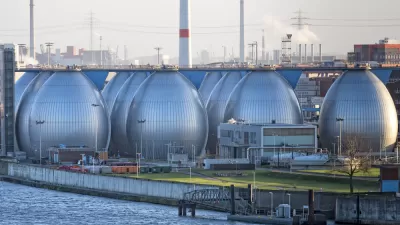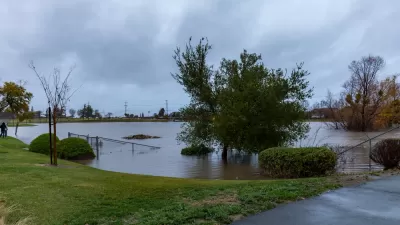In 2017, the Southern California city no longer had to be concerned about water quantity, but was plagued by issues of water quality.

“In 2017, San Diego stopped worrying so much about whether it would have enough water and started worrying about what was in the water,” writes Ry Rivard of the Voice of San Diego.
These worries, he continues, were lead and sewage; both represent systemic issues.
Lead was first. In January, the city found that in a significant number of its schools, old plumbing was leaking lead into the water, exposing not just a problem with the water, but a problem with how funding is distributed.
“At San Diego Unified in particular, the plumbing problems seemed to highlight how school districts and interest groups head-fake voters during campaigns for school construction bonds. Voters had been repeatedly persuaded to raise their own taxes to pay for school improvements. Then officials spent that money on things other than essential infrastructure.”
The city and state began work on a plan for school plumbing, but the next month, millions of gallons of sewage tumbled into the Tijuana River and across the border into San Diego; spilled sewage may or may not be linked to the city’s Hepatitis A outbreak.
The sewage probably is not at all new, in fact, Rivard writes, “Because of Tijuana River sewage spills, the San Diego City Council has had a state of emergency in effect since 1993–a real misuse of the word ‘emergency.’”
Of course, just because the historic California drought has subsided, it’s not as if San Diego can stop worrying about drought, and it’s not as if they haven’t.
But Rivard’s point is that the water quality issues are interfering with plans for the water quantity issues.
“Now, even new water supply projects are imperiled by the sewage crisis. For years, the Otay Water District had been talking about pitching in to fund a desalination plant in Mexico to help supply water to the United States. But this spring, David Gibson, executive director of the San Diego Regional Water Quality Control Board, said he worried a new desalination plant could siphon money from the already strained Tijuana sewer system.”
“The attention on water quality could quickly go away if the state returns to drought conditions, but for now,” Rivard concludes, “the drought emergency is over in San Diego but worries about water quality continue.”
FULL STORY: San Diego Went From Worrying About Having Enough Water to What’s in it

Maui's Vacation Rental Debate Turns Ugly
Verbal attacks, misinformation campaigns and fistfights plague a high-stakes debate to convert thousands of vacation rentals into long-term housing.

Planetizen Federal Action Tracker
A weekly monitor of how Trump’s orders and actions are impacting planners and planning in America.

In Urban Planning, AI Prompting Could be the New Design Thinking
Creativity has long been key to great urban design. What if we see AI as our new creative partner?

King County Supportive Housing Program Offers Hope for Unhoused Residents
The county is taking a ‘Housing First’ approach that prioritizes getting people into housing, then offering wraparound supportive services.

Researchers Use AI to Get Clearer Picture of US Housing
Analysts are using artificial intelligence to supercharge their research by allowing them to comb through data faster. Though these AI tools can be error prone, they save time and housing researchers are optimistic about the future.

Making Shared Micromobility More Inclusive
Cities and shared mobility system operators can do more to include people with disabilities in planning and operations, per a new report.
Urban Design for Planners 1: Software Tools
This six-course series explores essential urban design concepts using open source software and equips planners with the tools they need to participate fully in the urban design process.
Planning for Universal Design
Learn the tools for implementing Universal Design in planning regulations.
planning NEXT
Appalachian Highlands Housing Partners
Mpact (founded as Rail~Volution)
City of Camden Redevelopment Agency
City of Astoria
City of Portland
City of Laramie





























